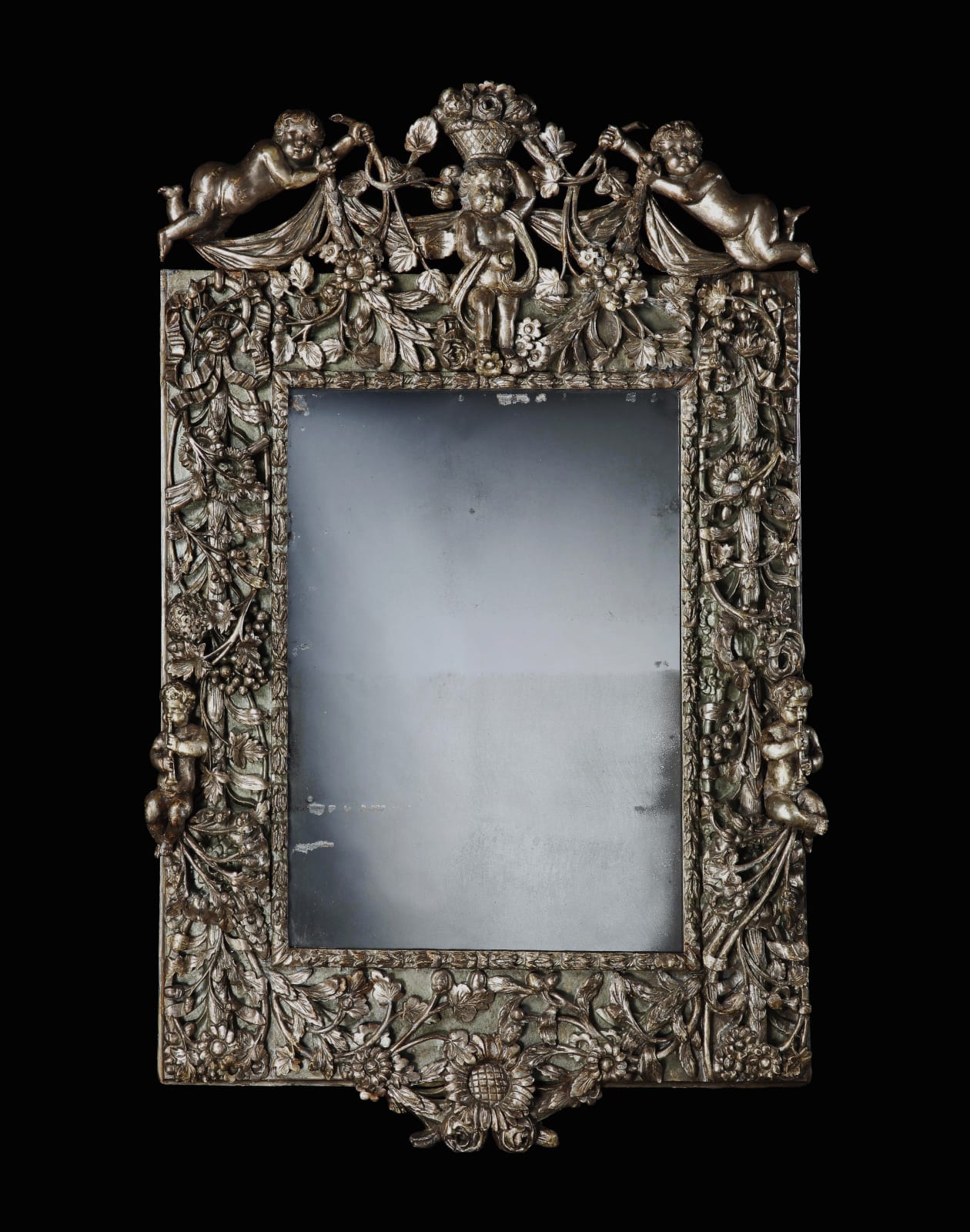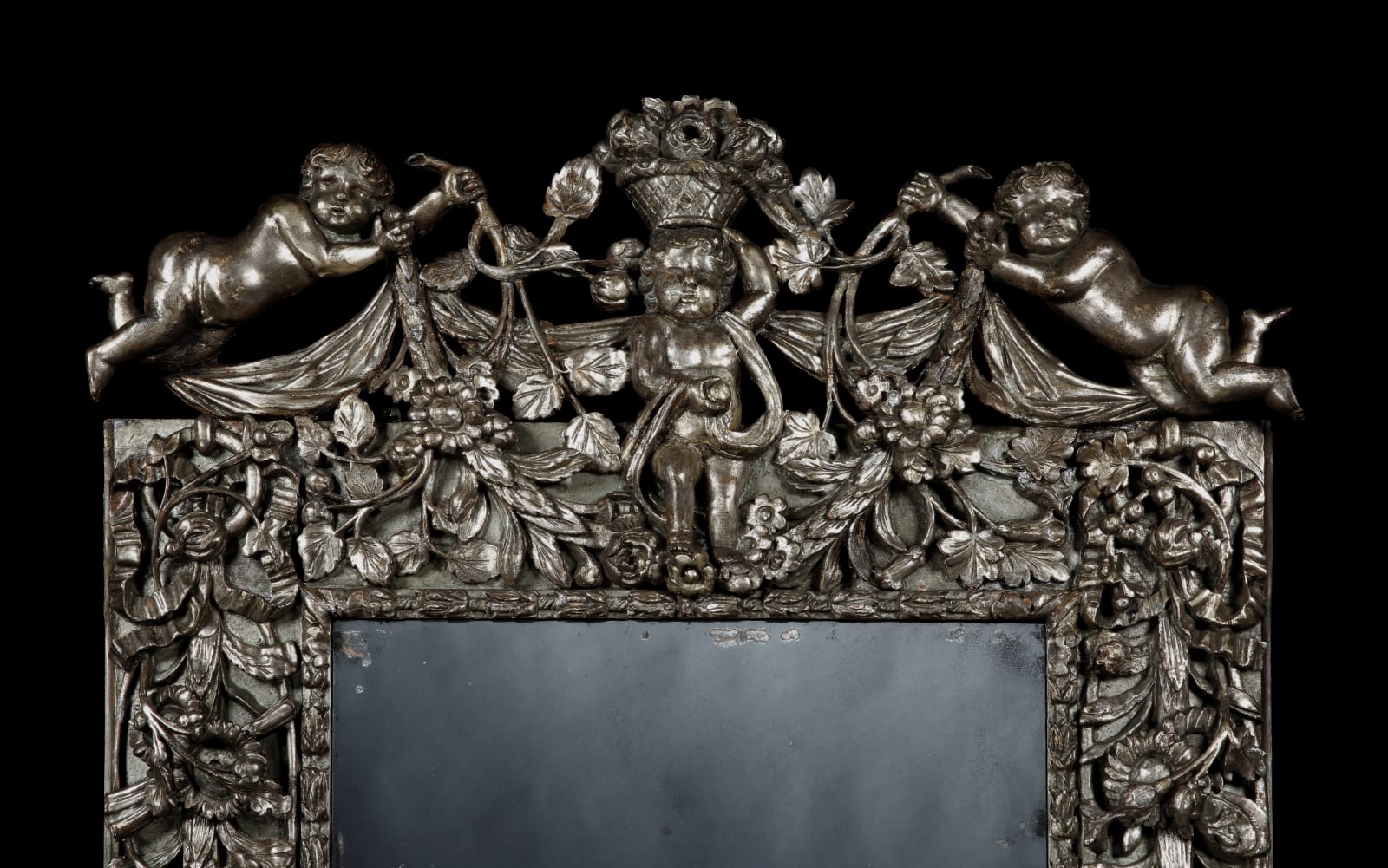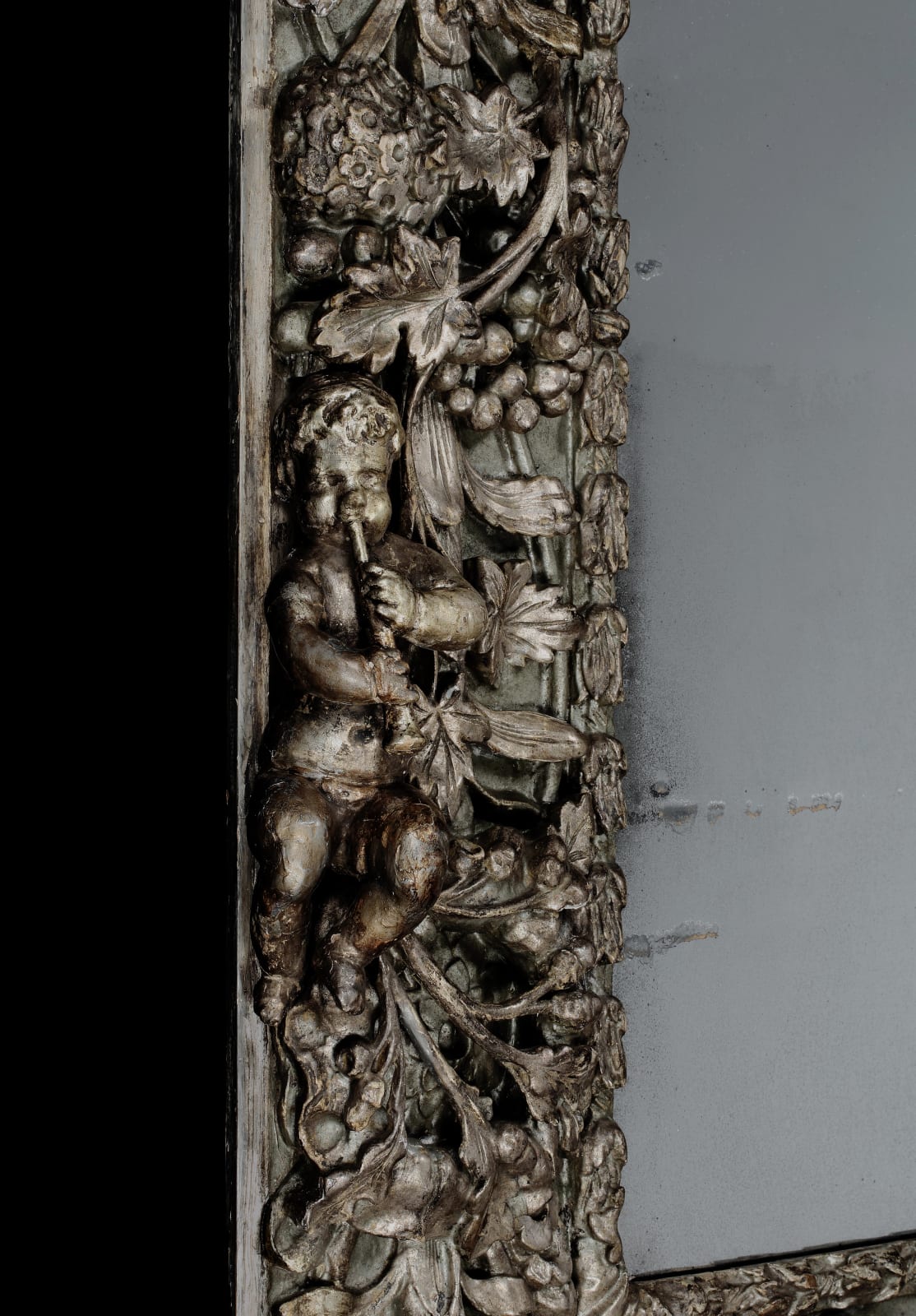THE HAMSTERLEY HALL SILVERED MIRROR
Width: 43.5” 110cm
Further images
Provenance
The Collection of Standish Robert Gage Prendergast Vereker, 7th Viscount Gort, MC, KStJ (1888-1975) at Hamsterley Hall, County Durham, England
By descent to the Hon. Catherine Mary Wass, OBE (1942-2021)
Exhibitions
COMPARE
Example in the Victoria & Albert Museum, London (Accession No. W.37-1949)
Example exhibited at The Grosvenor House Art & Antiques Fair, 1996 (Catalogue, p. 106)
Silver metal examples at Knole, Kent (NT 130034 and NT 130014.1/NT 130014.2, including silver metal furniture NT 130035 and NT 130036.1/NT 130036.2)
Silver metal examples in the Royal Collection (RCIN 35300, RCIN 35392 and RCIN 35302, including silver metal furniture RCIN 35299 and RCIN 35298)
Child, Graham, World Mirrors 1650-1900 (London, 1990), pp. 62-3
Hinkley, F. Lewis, Queen Anne & Georgian Looking Glasses (London, 1987), p. 87, pl. 61
Schiffer, Herbert F., The Mirror Book (New York, 1983), pp. 36-42
Wills, Geoffrey, English Looking Glasses (1670-1820) (London, 1965), p. 65, fig. 1; p. 67, figs. 7-8
Literature
Bowett, A., English Furniture: 1660-1714 (Woodbridge: 2002), pp. 12-5, 126-7, 139-43
Colville, J. R., Man of Valour: The Life of Field-Marshal the Viscount Gort (London, 1972)
Thornton, P., Seventeenth-Century Interior Decoration in England, France and Holland (New Haven and London, 1978), pp. 232-3, pl. 218
C. Hussey, ‘Hamsterley Hall, Durham: The Seat of the Hon. S. R. Vereker, M. C.’, Country Life, 21st October 1939, pp. 418-22
The rectangular plate surrounded by carved branches, fruit and flowers, surmounted by a cresting featuring putti above swags centring a central putto beneath a cornucopia basket, the sides with further putti, holding musical instruments, the lower part centred by a sunflower.
One of the few silvered mirrors from this period in England, it is part of a special group of mirrors of this type, abundantly carved with foliage and putti. Examples of this monumental scale are markedly more scarce, with the few surviving pieces preserved in the collections of important institutions around the world.
Of extant examples, the most comparable to the present mirror is the example bearing the arms of Gough of Old Fallings Hall, Staffordshire, probably Sir Henry Gough (1649/50-1724), now in the Victoria & Albert Museum, London (Accession No. W.37-1949). Other related mirrors are the example incorporating the arms of Fisher of Packington, Warwickshire in the Lady Lever Art Gallery, Liverpool and the example formerly in the Vernon Collection at Sudbury Hall, Derbyshire (NT 652738).
The silvering would have given the mirror the appearance of solid silver, connecting the present mirror to important mirrors executed in the metal at Knole, Kent (NT 130034 & NT 130014.1/NT 130014.2) and in the Royal Collection (RCIN 35300), each supplied with a table and stands en suite to form a triad.
Carved profusely with foliage and putti, the mirror derives stylistically from Continental baroque designs of the second half of the seventeenth century, exemplified by a Parisian engraving of c. 1670 from a triad suite entitled Live de Miroirs, Tables et Guéridons, a copy of which is in the Metropolitan Museum of Art, New York (Accession No. 33.84.1-4) and illustrated in Thornton, Seventeenth-Century Interior Decoration (New Haven, 1978), pp. 232-3, pl. 218.
In their English context, these motifs were uniquely symbolic. In the 1660s the economy in England underwent serious recession and society salved the scars of Protectorate privations. The nation’s fortunes reached their nadir between 1665 and 1667 when London endured the Great Plague (1665), the Great Fire (1666) and a second Anglo-Dutch war (1665-67). With ‘public matters in a most sad condition’ and ‘all sober men…fearful of the ruin of the whole Kingdom’, on New Year’s Eve in 1666 Samuel Pepys saw no prospect of improvement, beseeching ‘good God deliver us’.
Prosperity began to emerge at the end of the decade, however, developing into economic boom lasting into the 1690s. England’s woollen cloth manufacturers rose to successfully challenge cheaper competition abroad and the English ‘New Draperies’ found new markets both at home and overseas particularly in the Mediterranean and the Levant. The re-export trade, which saw the goods flooding into London from Asia, Africa and the Americas sent on to all parts of Europe and the Mediterranean, boomed to become the nation’s big business.
This mirror represents this rejuvenation, prosperity and national happiness of Restoration England. Berries, branches, flowers and a cornucopia symbolise growth and plenty, while ribbons, swags and putti playing instruments capture the mood and sounds of celebration. After the turmoil and hardships of the 1650s and 1660s, this mirror stands for the optimism with which the nation in the years of prosperity since was imbued.
The mirror is also a product of increasing wealth and a marker of the accelerating pace of technological advancement. Mirror glass was very difficult to produce at this time and a plate of this size will have been especially costly.





